Fort Ancient State Memorial Park, Ohio
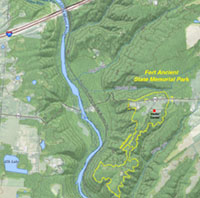 |
Fort Ancient State Memorial Park encompasses a prehistoric American Indian ceremonial complex constructed starting about 2200 years ago. The earthworks are located on hilltops along the east side of the Little Miami River Valley in central southwestern Ohio. Fort Ancient covers about 125 acres and consists of a series of earthworks (mounds, ditches and walls). Early European settlers though it was a fort. However, today Fort Ancient is not considered a fortification, but rather a gathering site for religious and social ceremonial activities. |
Map of Fort Ancient: Click here or on the map to see a larger view.
Click here to see a larger scale map of Ohio showing the location of Fort Ancient. |
| Click on any image for a larger view. |
|
3D Photo Gallery
|
Switch to Standard Photo Gallery |
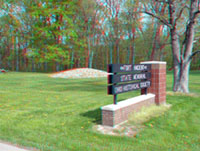 |
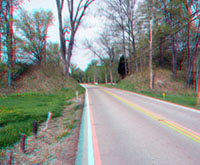 |
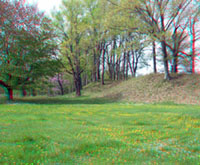 |
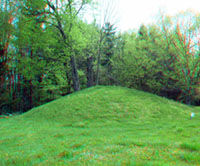 |
| Fort Ancient State Memorial preserves a nearly 100-acre complex of earthworks on a hilltop near Lebanon, Ohio. |
This view shows where Ohio Route 350 passes through ancient earthworks near the park's west entrance. |
Fort Ancient is the largest and best-preserved prehistoric hilltop enclosure earthworks in the United States. |
Excavations show that the wall earthworks were not burials, however, several mounds in the area were burial mounds. |
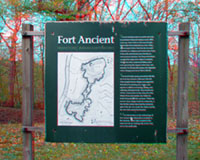 |
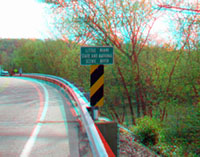 |
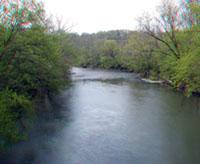 |
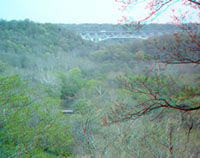 |
| An introductory sign includes a map of the extent of the earthworks at Fort Ancient, and describes the setting. |
Fort Ancient is spread out on a hilltop about 245 on the eastern side of the Little Miami River. |
View of the Little Miami River from the bridge on Ohio Route 350 in the valley west of the park. |
View of the Little Miami River valley and the high Jeremiah Morrow Bridge for Interstate 71 north of the park. |
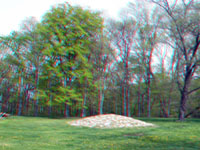 |
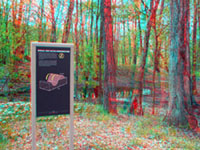 |
 |
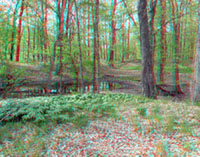 |
| A small mound covered with paving-stone-like slabs. Fort Ancient was a ceremonial center for the region... |
Park signs like this one provide archaeological interpretation of the earthworks and land use. |
Archaeological evidence extending back about 2000 years, but the construction of the wall began about 950 AD. |
The earthworks consist of mounded border walls (with gaps) and water-filled ditches inside the border earthworks. |
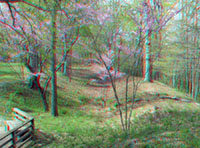 |
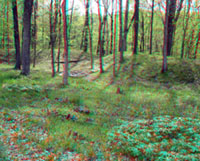 |
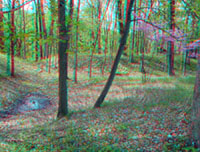 |
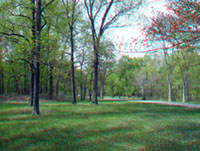 |
| The earthworks (walls) extend for three and one-half miles (18,000 ft) around a 100-acre complex. |
Border wall earthworks and ditches covered with forest. Spring may apples in the foreground. |
The earthworks at Fort Ancient were built in at least three stages over an estimated 400-year period. |
Well manicured grassy fields cover the ceremonial grounds surrounded by the forested earthworks at Fort Ancient. |
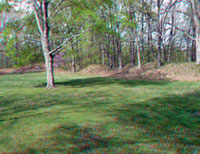 |
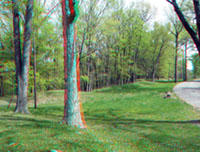 |
 |
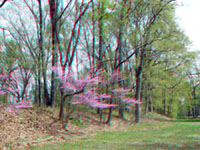 |
| Earthen mound walls with gaps at Fort Ancient. |
Earthworks and fields along the park road. |
Earthen mound walls with gaps at Fort Ancient. |
Redbud tree in bloom growing on the earthworks. |
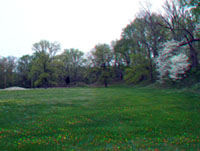 |
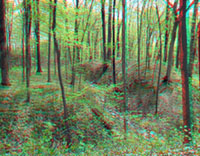 |
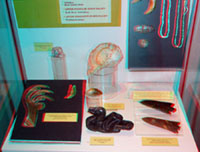 |
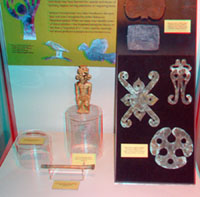 |
| A dogwood tree with white flowers on the earthworks. |
Wall earthworks and water ditches in the woods. |
Artifacts associated with the Fort Ancient cultures. |
Artifacts associated with the Fort Ancient cultures. |
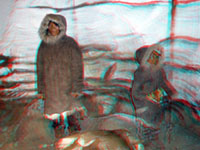 |
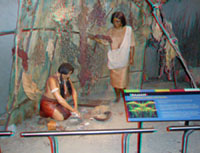 |
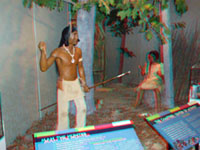 |
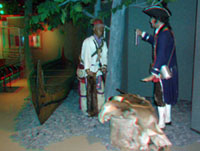 |
| Dioramas illustrating life of Ohio's ancestral American Indian Cultures in the Fort Ancient Museum. |
Dioramas illustrating life of Ohio's ancestral American Indian Cultures in the Fort Ancient Museum. |
Dioramas illustrating life of Ohio's ancestral American Indian Cultures in the Fort Ancient Museum. |
When Worlds Collide exhibit illustrating early contact between European and American Indian cultures. |




























